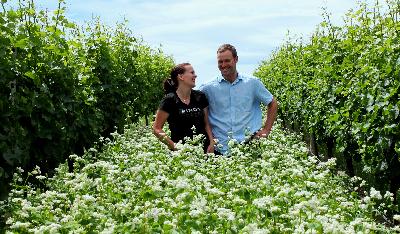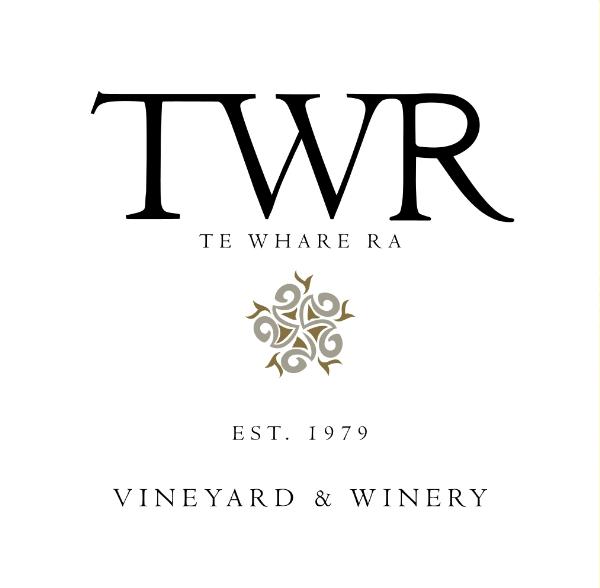
Buckwheat (Fagopyrum esculentum)
For us biodiversity and working with the environment naturally is the key to maintaining a good vineyard. The vines may be the bit everyone sees and may seem like the focus of a vineyard but we spend a lot of time looking at our soils. Our vines live in the soil so the soil must be living.
The rows in our vineyard are 3 metres wide so the area across the vineyard covers about 10 hectares. Inter row planting is a very effective use for this land and we crop alternate rows with the other rows planted in grass.
One of the natural processes for pest reduction used here at Te Whare Ra is the use of Buckwheat (Fagopyrum esculentum) planted in October each year.
The buckwheat seed is bought from a certified organic supplier and the timing of when we sow is all important. The usual time from planting to flowering is 6 weeks and with careful monitoring of our vines we sow the crop with the aim of having the buckwheat flowering prior to bunch closure. Buckwheat does not like hard soils and fails to thrive in these soils but our well aerated soils mean the buckwheat can grow to over 1 metre tall.
The buckwheat plant has a tall, scented, white flower. Not something you’ll find at a florist as the scent isn’t that attractive for humans but very attractive for beneficial insects. These include lady bugs, wasps and hoverfly’s. These parasitic insects are great at killing the leaf roller caterpillar which makes their home within the vines bunches by making a nest or bed of silk webbing which in turn holds rot organisms within the bunch. By limiting these pests in our vines we can reduce the risk potential of botrytis which can be exacerbated by the rotting organisms.
At the end of the season and the first frosts will kill the buckwheat so it never takes hold as a weed but generally we mow the crop just after flowering before the seeds mature.




